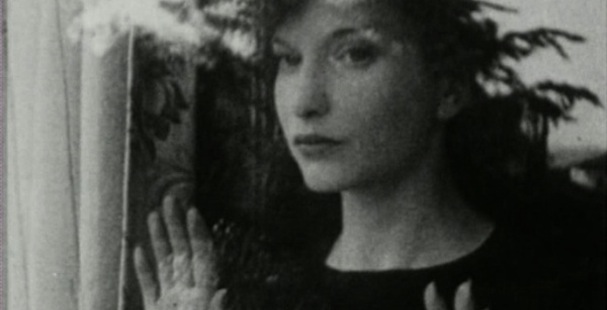Sydney Pollack’s wonderful 1982 comedy Tootsie portrays a difficult actor no one will hire who finds success and wisdom disguised as a liberated female actress on a hit soap opera. Part of the education of Michael Dorsey (Dustin Hoffman) involves what he does with information he learns during some girl talk with his costar Julie (Jessica Lange) while disguised as Dorothy Michaels. Julie confides that she is tired of the romantic games men and women play and would find it blessedly refreshing to be approached by a man who just asked her to make love, plain and simple. When Michael meets Julie at a party as himself, he repeats verbatim the words Julie spoke to Dorothy. She smiles and dumps a drink on his head.
The 1980s represented a time in the United States when the roles of men and women were shifting, and mainstream movies changed to reflect what was topical. When Michael Dorsey got in touch with his feminine side, he felt he was smarter about how to handle people and situations, saving his career and increasing his chances for interpersonal happiness. Nonetheless, not being a woman, he did not really know how women talk together and when they might be speaking truth or sharing fantasies that they would never act on in real life.
Although 40 years have passed since Tootsie signaled that the tendrils of the women’s liberation movement had reached into the zeitgeist, men as a socially dominant collective still seem to cling to off-base beliefs about what makes women tick. Media remain gripped by images of sexy, scantily clad babes and characters that are either pseudo-male kickass grrls or corporate honchos or clingy and confused traditional women. Just as children are not little adults, women are not curvy men. And a certain puritanical attitude that both endorses explicit sex and nudity while shunning blatant displays of authentic female sexuality was lampooned in Seth MacFarlane’s misunderstood musical number at the 2013 Academy Awards that unmasked the juvenile, masculine obsession with boobs. With few exceptions, male representations of women on film, even sympathetic portrayals, remain the incomplete projections of outsiders looking in.
The widespread dissemination of the Bechdel Test comes nowhere near addressing the unfinished task of identifying a cinematic language that addresses women in all their complexity. Yet this task could be relatively simple if we turn to a female filmmaker who has already developed an easy-to-understand cinematic language of the feminine: Maya Deren. Deren, an American avant-garde filmmaker, crafted indelible images straight from the feminine psyche that offer a cinematic language that can help female and male filmmakers understand and create authentic female characters and experiences by which audiences recognize themselves and their opposite, and hopefully, help balance the power relationship between men and women in society.
Deren’s most well-known film, a dreamscape of the feminine mind called Meshes of the Afternoon (1943), is often dissected using Freudian language. A recurring image of a knife, for example, has been interpreted as representing sexual desire as a male might view it. However, knives do more than penetrate, and this and other symbols in the film should be interpreted from the film’s director and star, leaving aside the condescending and frequent appendage of Alexander Hamid’s name as a codirector when he was, in fact, the cinematographer. Deren’s image of the knife in bread or on her bed is a very homely figure; knives are useful to a woman’s creative process in cooking, cutting film, cutting umbilical cords, not inherently symbols of sexual penetration or violence.
The film has a deeply domestic cast, taking place in a woman’s home, with an inwardness that reflects a feminine bias toward contemplation. Losing the key to the house down the front stairs and later having it emerge from Deren’s mouth indicates the importance of finding solutions from within feminine wisdom, not in the external, masculine world. Deren’s sexual symbolism is highly erotic without showing an ounce of forbidden flesh. She sits in a chair, places a flower in her crotch, and moves her hand up her body and over her breast. We see an extreme close-up of her eye, arousal evident until it flutters and closes. Of course, women are often connected with flowers, but shifting the focus from innocence to genitalia makes many people far too uncomfortable to admit Deren’s symbolism into their consciousness. Significantly, perhaps, Deren has a male protagonist in Meshes who is a source of sexual desire as well as discord.
In At Land (1944), Deren offers symbols of the feminine connection to the natural world, emerging from the sea and moving through tangles of seaweed and tree limbs into the larger society. There, she coopts the male world of logic, represented by a chess piece she sends plummeting from a dinner table back to the beach. In both films, Deren recasts the image of the Holy Trinity as all female. Seeing both films in succession gives the viewer a hint of Deren’s struggle with masculine symbols, but relative peace with her own femininity.
Deren understood symbolism with which the larger world was familiar, but recast or reinvented it to reflect feminine psychology and concerns. Had she had a greater film output, we might have seen completely new forms and images by which to encounter the feminine. Yet generations of female filmmakers that followed her have embellished on her language but have not succeeded in breaking through the considerable barriers to acceptability. It will prove useful to examine these efforts in more depth and suggest ways to cut a path through the briars to energize cinema with a language spoken by the other half of humanity.
Marilyn Ferdinand is a freelance writer and regular contributor to Fandor. She blogs on film at Ferdy on Films and is the cofounder of For the Love of Film: The Film Preservation Blogathon.





